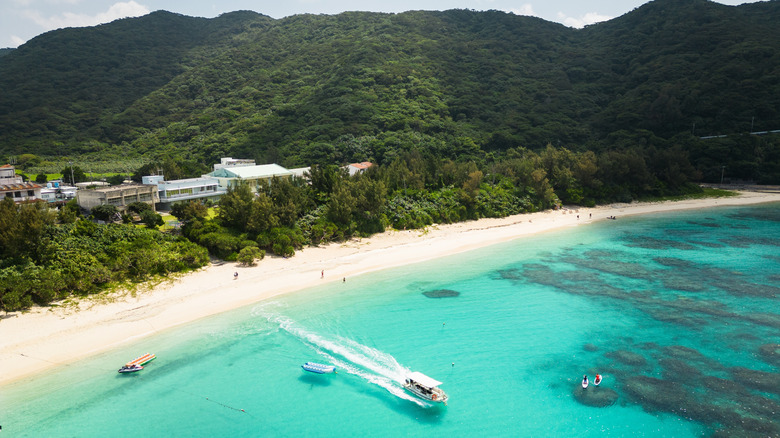This Increasingly Popular Method Of Photography And Recording Is Not Appreciated In Japan
Japan is no stranger to photography. Tintype images of samurai and geishas date back to the 1860s, when the technology was still new. Today, Canon, Nikon, and Sony are three of the leading camera manufacturers in the world, and they're all headquartered in Tokyo. Japan has long been revered for its visual arts in general — from shina hanga printing to world-class animation — and innumerable Japanese photographers have earned international acclaim.
This love for photography extends to video as well, and YouTube and Instagram are two of the most popular social media apps in the country. In fact, 78.6 million people in Japan are active on YouTube every month, and only five other countries on the planet have reported more users. Influencer culture is truly "big in Japan," as it is in other countries, with vloggers documenting everything from food to pop culture to domestic travel. And with so many hidden-gem cities in Japan to add to your bucket list, the potential for digital imaging is endless.
But as ripe as Japan is for photography, one device may raise hackles: the drone. Yes, unmanned aerial vehicles are legal in Japan. Yes, drones are extremely popular, with a market value of $1.8 billion. Yes, if you search for "Japan drone footage" on YouTube, you'll find thousands of eye-popping aerial reels. But drones have become increasingly controversial in Japanese airspace, and many residents worry about their right to privacy.
The drone controversy in Japan
Here's the conundrum for drone operators: According to Japanese law, a drone may not fly within 30 meters (98.4 feet) of any private property. In spirit, this makes sense. From that distance, drones may still annoy people on the ground, but they shouldn't feel threatening or invasive. Most drones have limited telephoto range, so they can't effectively spy through windows or record someone's PIN at an ATM. At the same time, "private property" covers an enormous amount of Japan's land area. Indeed, Tokyo has added ordinances that make it nearly impossible to fly a drone anywhere in the city, even in urban parks. Japan's many pagodas and palaces should also be avoided, even if they're in isolated spots, since most of these sites are hundreds of years old and hallowed cultural institutions.
This protectiveness is a natural extension of Japan's photographic practices: Japan has several no-nonsense etiquette rules about photography, including a ban on cameras and selfie sticks in shrines and temples, among other popular destinations. Taking pictures of strangers is considered a serious faux pas, and posting or selling portraits of people without their permission could invite litigation. Drones add a whole new level to this conflict, when pilots can hover over private yards and rooftops, capturing anyone and anything that happens to be below.
That said, most Japanese drone laws make perfect sense and closely mirror FAA regulations. Pilots cannot fly around airports, densely inhabited areas, or higher than 492 feet above the ground, unless they receive prior written permission from the correct local authority. All these rules have more to do with safety than respecting personal space; the last thing a tourist in Japan wants to do is accidentally crash a drone into a concert crowd or clip a 747 in mid-takeoff.
How to bring and operate a drone in Japan
As a tourist, you can absolutely take your drone to Japan and fly it around, as long as you respect the rules. Before you go, you're required to register your drone with the Japanese government using its web portal. This is mandatory for any drone weighing over 100 grams, which is pretty much every drone with an affixed camera. This is a pretty small ask, considering even packing this tech toy for your cruise could get you banned in many destinations, and 27 countries have outlawed drone use altogether. The process may also benefit you. For instance, if you lose your drone, anyone who finds it could use its serial number and registration to track you down and return it.
So, where can you fly your drone in Japan? Remember that around 66% of the country's land area is covered in forest, and the islands are made up of nearly 13,000 named mountains. Some regions, like Hokkaido, have vast rural areas that are sparsely populated, as well as scenic small towns and villages, where the danger of harming anyone with a drone is extremely low. Japan also has more than 18,000 miles of coastline, much of which is remote, quiet, and public. While it's always nice to capture people — to add humanity to your photos and video, or to give a sense of scale — just make sure to fly about 100 feet away from anyone you don't know. Laws aside, keeping your distance is a universal courtesy, no matter where you're flying.


